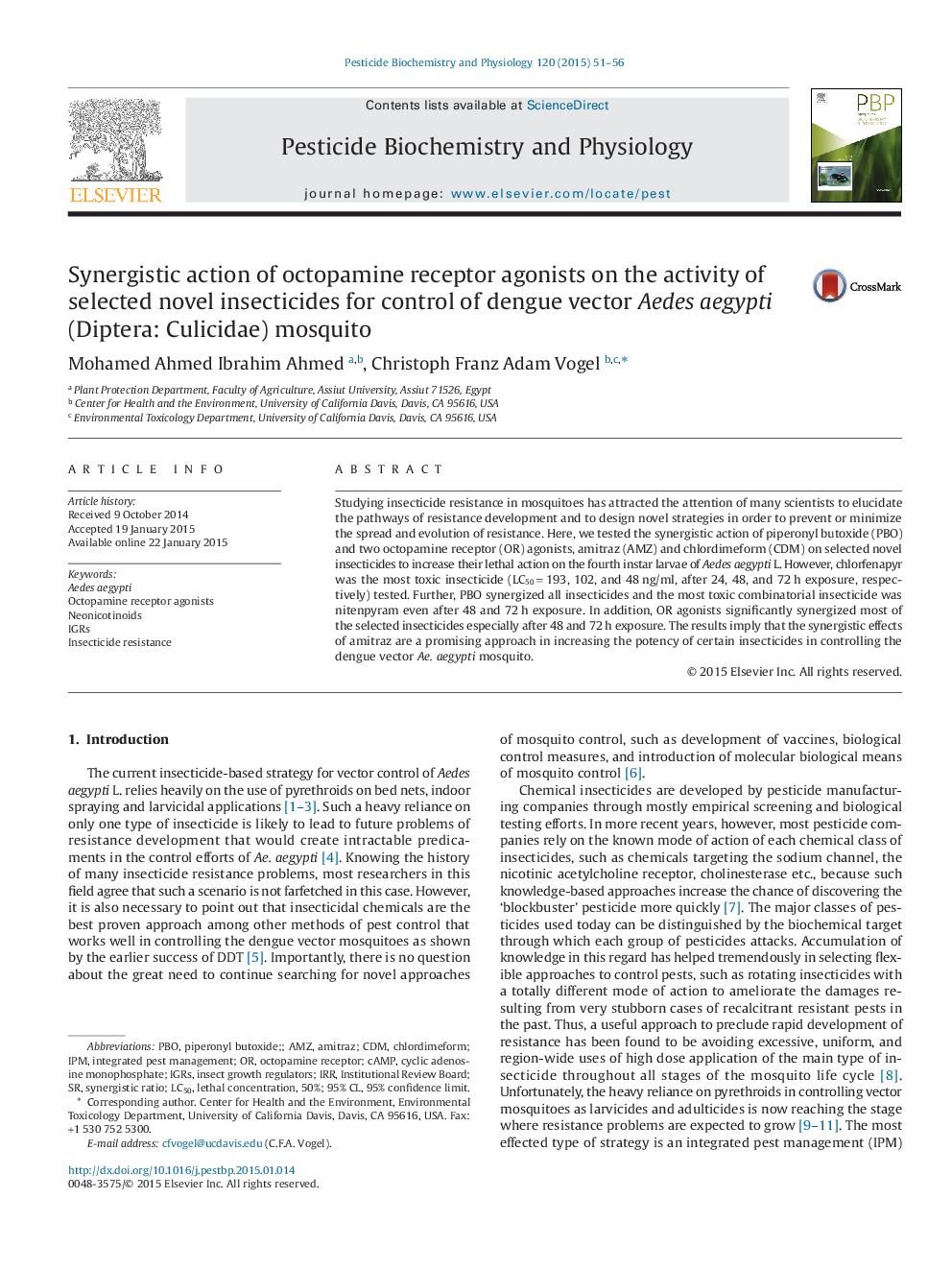| Article ID | Journal | Published Year | Pages | File Type |
|---|---|---|---|---|
| 2009095 | Pesticide Biochemistry and Physiology | 2015 | 6 Pages |
•Chlorfenapyr was the most toxic insecticide among the selected insecticides.•PBO is the most toxic insecticide in combination with nitenpyram.•Amitraz is a promising tool in increasing the potency of the selected insecticides controlling Ae. aegypti mosquito.
Studying insecticide resistance in mosquitoes has attracted the attention of many scientists to elucidate the pathways of resistance development and to design novel strategies in order to prevent or minimize the spread and evolution of resistance. Here, we tested the synergistic action of piperonyl butoxide (PBO) and two octopamine receptor (OR) agonists, amitraz (AMZ) and chlordimeform (CDM) on selected novel insecticides to increase their lethal action on the fourth instar larvae of Aedes aegypti L. However, chlorfenapyr was the most toxic insecticide (LC50 = 193, 102, and 48 ng/ml, after 24, 48, and 72 h exposure, respectively) tested. Further, PBO synergized all insecticides and the most toxic combinatorial insecticide was nitenpyram even after 48 and 72 h exposure. In addition, OR agonists significantly synergized most of the selected insecticides especially after 48 and 72 h exposure. The results imply that the synergistic effects of amitraz are a promising approach in increasing the potency of certain insecticides in controlling the dengue vector Ae. aegypti mosquito.
Graphical AbstractFigure optionsDownload full-size imageDownload as PowerPoint slide
